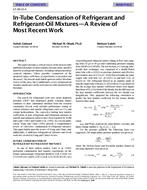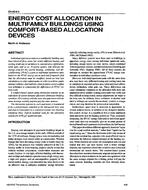This paper studies the effectiveness of one commercial computational fluid dynamics (CFD) program for simulating combined natural convection and heat transfer in three dimensions for air-filled cavities similar to those found in the extruded frame sections of windows. The accuracy of the conjugate CFD simulations is evaluated by comparing results for surface temperature on the warm side of the specimens to results from experiments that use infrared (IR) thermography to map surface temperatures during steady-state thermal tests between ambient thermal chambers set at 0ºC and 20ºC. Validations using surface temperatures have been used in previous studies of two-dimensional simulations of glazing cavities with generally good results. Using the techniques presented and a noncontact infrared scanning radiometer we obtained surface temperature maps with a resolution of 0.1ºC and 3 mm and an estimated uncertainty of ±0.5ºC and ±3 mm. Simulation results are compared to temperature line and contour plots for the warm side of the specimen. Six different cases were studied, including a simple square section in a single vertical cavity and two four-sided frame cavities as well as more complex H- and U-shaped sections. The conjugate CFD simulations modeled the enclosed air cavities, the frame section walls, and the foam board surround panel. Boundary conditions at the indoor and outdoor air/solid interface were modeled using constant surface heat-transfer coefficients with fixed ambient-air temperatures. In general, there was good agreement between the simulations and experiments, although the accuracy of the simulations is not explicitly quantified. We conclude that such simulations are useful for future evaluations of natural convection heat transfer in frame cavities.
Units: SI
Citation: Symposium, ASHRAE Transactions, vol. 107, pt. 2
Product Details
- Published:
- 2001
- Number of Pages:
- 12
- File Size:
- 1 file , 910 KB
- Product Code(s):
- D-7058


